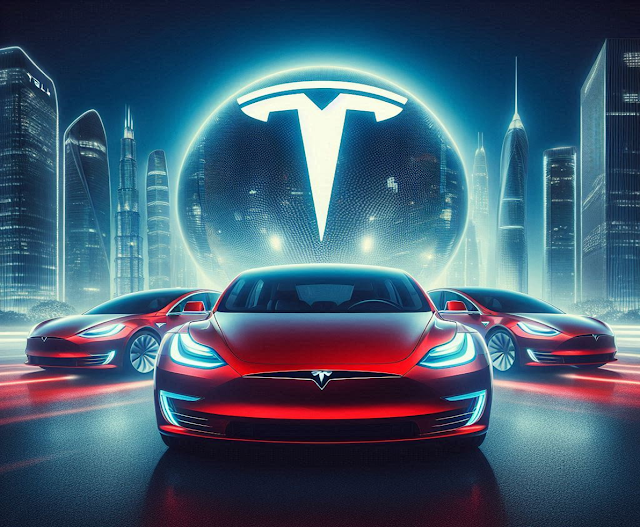What is F1? The Pinnacle of Motorsport!
A symphony of roaring engines, cutting-edge technology, and razor-sharp precision, all blended into a high-octane spectacle that keeps millions on the edge of their seats. That’s Formula 1, the 'pinnacle of motorsport'. But what exactly is F1, and why does it captivate audiences worldwide? Buckle up, because we’re about to dive into the thrilling world of Formula 1.
The Thrilling Evolution of Formula 1
F1 consists of 10 teams, each with two drivers, making a total of 20 drivers on the grid. These teams design and build their own cars, working under strict regulations. An F1 season consists of a series of races known as Grand Prix, held on a mix of street circuits and purpose built tracks. Each Grand Prix weekend is divided into three main parts:
-
Practice Sessions (Friday & Saturday): Drivers get three sessions (two on Friday, one on Saturday) to familiarize themselves with the track, refine their car setups, and collect data. This is crucial for understanding tire wear, fuel loads, and race strategies.
-
Qualifying (Saturday): This determines the starting grid for the race and follows a three-stage knockout format:
-
Q1: All 20 drivers set lap times within 18 minutes. The five slowest are eliminated.
-
Q2: The remaining 15 compete for another 15 minutes. The five slowest are eliminated.
-
Q3: The top 10 fight for pole position in a 12-minute showdown.
-
-
Race Day (Sunday): The main event, where drivers battle wheel-to-wheel for victory. Points are awarded based on finishing position, with the winner earning 25 points. Bonus points are available for the fastest lap and Sprint Races (on select weekends).
The season consists of 20+ races, and the driver with the most points at the end wins the Drivers' Championship, while the team with the most points secures the Constructors' Championship.
The Technology: Engineering Marvels on Wheels
Formula 1 cars are not just high-speed machines; they are the result of cutting-edge engineering, aerodynamics, and state-of-the-art technology, making them some of the most advanced vehicles on the planet. Every component, from the power unit to the tires, is meticulously designed for maximum performance, efficiency, and safety, pushing the boundaries of automotive innovation.
Modern F1 cars use hybrid turbocharged V6 engines, combining internal combustion with electric power for unparalleled efficiency. The MGU-K (Motor Generator Unit-Kinetic) recovers energy from braking, while the MGU-H (Motor Generator Unit-Heat) converts exhaust heat into additional power. This system allows for incredible acceleration while meeting sustainability goals with improved fuel efficiency and reduced emissions.
Key Technological Innovations:
-
Hybrid Power Units (PUs): The modern F1 car uses a 1.6L V6 turbocharged engine paired with an Energy Recovery System (ERS). This hybrid setup recycles wasted energy, providing an extra boost of over 160 horsepower while improving fuel efficiency.
-
Aerodynamics: The shape of an F1 car is designed to maximize downforce, pressing it to the track for better grip, while minimizing drag for higher speeds. Key components include:
-
Front Wing: Directs airflow to optimize cornering performance.
-
Rear Wing & DRS (Drag Reduction System): The rear wing helps with downforce, but DRS allows it to open on straights, reducing drag for higher speeds.
-
Ground Effect Floors: New regulations have reintroduced ground effect aerodynamics, making the car stick to the track even more.
-
-
Tires: Pirelli manufactures special slick tires (no tread) for maximum grip. Teams can choose from different compounds:
-
Soft (Red Stripe): High grip, but wears out quickly.
-
Medium (Yellow Stripe): A balance between grip and durability.
-
Hard (White Stripe): Lower grip, but lasts longer.
-
-
Carbon Fiber Construction: F1 cars are made from ultra-lightweight carbon fiber, ensuring they remain strong yet extremely fast.
-
Safety Innovations:
-
Halo Device: A titanium structure protecting drivers from serious injuries.
-
Crash Structures: Designed to absorb impact in accidents.
-
Fireproof Race Suits: Drivers wear gear capable of withstanding extreme temperatures for safety.
-
Strategy: The Secret Weapon in F1
Beyond pure speed, strategy plays a crucial role in race outcomes. Here’s how:
-
Pit Stops: Teams plan tire changes to optimize race pace. A perfect pit stop takes under 2 seconds.
-
Fuel & Tire Management: Drivers must balance aggression with conserving resources to finish strong.
-
Weather Conditions: Rain changes everything—drivers must switch to wet tires and adjust driving styles instantly.
-
Undercut & Overcut Strategies: Teams may pit early (undercut) to gain track position or stay out longer (overcut) to push when rivals slow down.
The Future of F1: Where is it Heading?
F1 has committed to becoming carbon neutral by 2030, and one of the biggest steps in this journey is the introduction of 100% sustainable fuels by 2026. These fuels, designed to be eco-friendly while maintaining high performance, will significantly reduce the sport’s carbon footprint. Additionally, teams are exploring sustainable materials in car manufacturing and improving logistics to cut down emissions.
The 2026 F1 regulations will bring major changes, particularly in power unit design and car aerodynamics. The new hybrid engines will have a 50-50 power split between internal combustion and electric energy, making cars more efficient while maintaining their signature speed and intensity. Additionally, active aerodynamics will allow cars to adjust their wings for better energy efficiency and higher top speeds on straights.
AI and machine learning are already playing a role in F1, from race strategies to car simulations. In the future, AI-powered systems could optimize car setups in real-time, enhance driver training through predictive analysis, and improve safety measures by detecting potential risks before they occur. Teams will rely even more on big data and real-time telemetry, making race strategies more precise than ever.
With constant innovation, growing global audiences, and a strong push for sustainability, F1 is set to remain the pinnacle of motorsport while adapting to the challenges of the modern world. One thing is certain, the future of Formula 1 will be faster, smarter, and greener than ever before.
Why You Should Watch F1
So the next time you hear the deafening roar of an F1 engine, remember, you’re witnessing the pinnacle of motorsport. And trust me, once you start watching, you won’t be able to stop. So buckle up and start watching!




Comments
Post a Comment